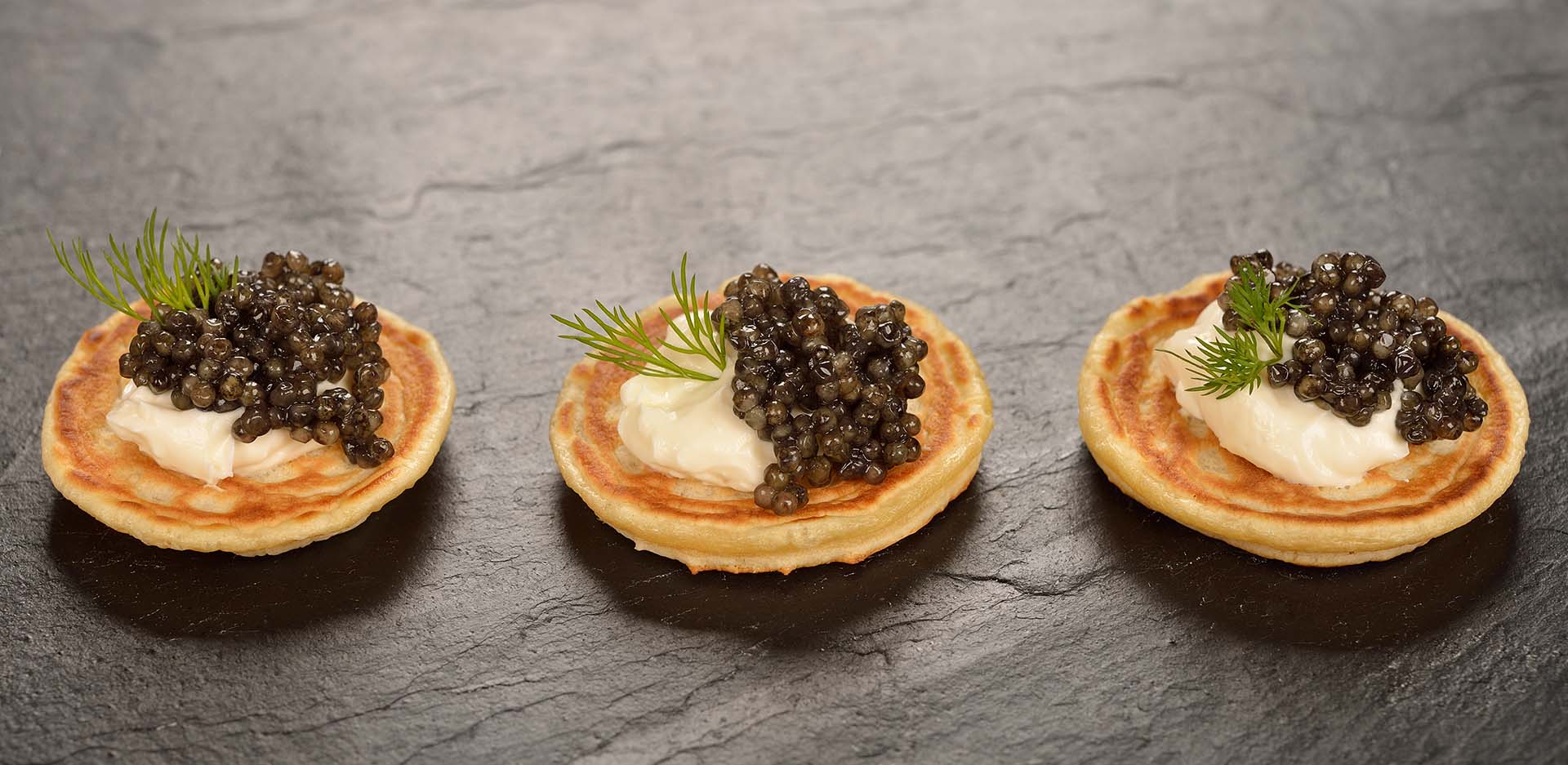
Unpacking Flavor: What Does Caviar Taste Like?
What does caviar taste like? Read more about the flavor profiles, types, and nutritional value of this luxury food item and where you can buy it.
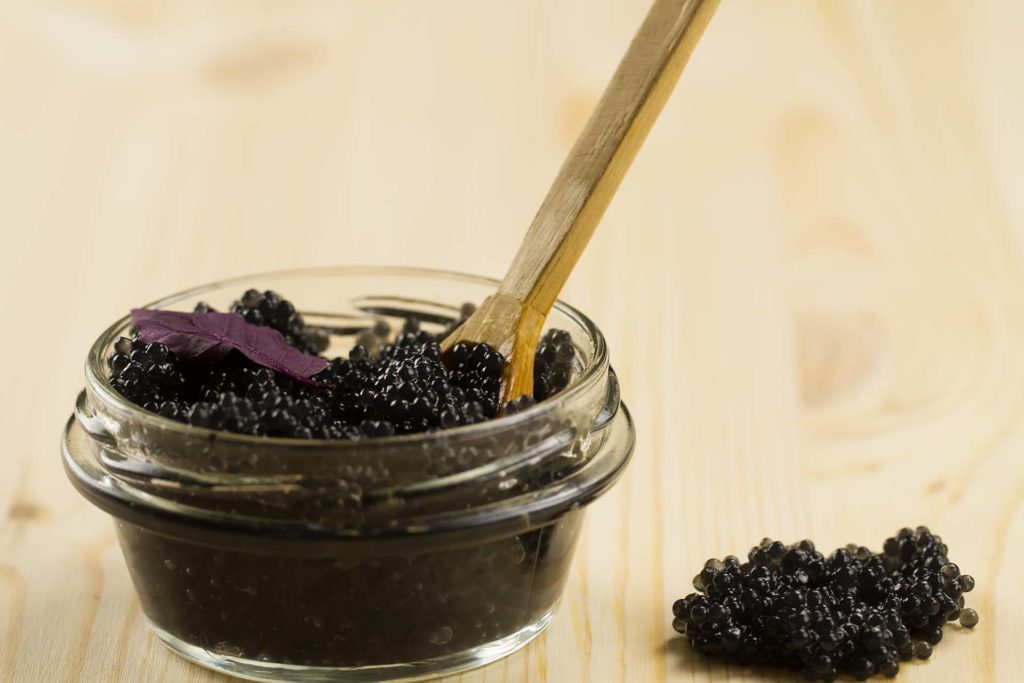
Without even looking at the prices, assuming caviar is expensive is correct. Although there are options that don’t cost a lot, they’re rarely as good as the real deal. But how much is caviar? And which options fall under the high-end price range? Find out here.
Caviar’s history dates back thousands of years, with evidence suggesting that ancient Persians were among the first to consume sturgeon roe from the Caspian Sea. They called it « khaviar, » meaning « cake of strength, » and believed it had medicinal properties.
Later in time, the Greeks, Romans, and Russian tsars also discovered and embraced caviar’s unique flavor and texture.
The Caspian Sea, as the world’s largest inland body of water, has been a significant source of roe for centuries due to its rich sturgeon population. The sturgeons found here include Beluga, Osetra, and Sevruga, known for producing the highest-quality eggs.
Over time, as international trade and communication expanded, the prestige and demand for caviars from the Caspian Sea grew, solidifying its status as a luxury food item.
In the 19th and 20th centuries, this delicacy became a symbol of wealth and extravagance, often enjoyed by European royalty and American high society. The collapse of the Soviet Union in the early 1990s opened up the Caspian Sea region’s market to the global economy, further increasing its popularity and demand.

Iranian Beluga caviar, harvested from the Beluga sturgeon (Huso huso) in the Iranian waters of the Caspian Sea, is one of the most expensive caviars globally. The high cost is attributed to several factors, including rarity, strict fishing and production regulations, and meticulous and labor-intensive harvesting and preparation processes.
These sturgeons are critically endangered, with strict fishing quotas imposed to protect the species. This scarcity, coupled with the fact that sturgeons take 15-20 years to reach maturity and produce eggs, makes Iranian Belugas extremely rare and sought after.
Their eggs are the largest among all caviar-producing species, with a buttery, creamy, and delicate flavor that is highly prized by connoisseurs. This unique taste profile is another factor contributing to its exceptionally high cost.
The global sturgeon population has a significant impact on caviar’s costs and production. Overfishing, habitat loss, and pollution have led to a decline in wild sturgeon populations, particularly in the Caspian Sea region.
As a result, many sturgeon species are now listed as critically endangered, with some nearing the brink of extinction. This decline has led to strict fishing quotas and regulations aimed at protecting and preserving the remaining populations.
This scarcity has driven up prices, as demand often outpaces the limited supply. Consequently, the industry has shifted its focus to sustainable fish farming practices to meet the global demand for caviars without further depleting the wild population of sturgeons.
Sustainable farming involves controlled breeding and raising of sturgeons in a closed environment that closely mimics their natural habitat. This approach helps protect the wild sturgeon population and allows for more consistent and controlled production.
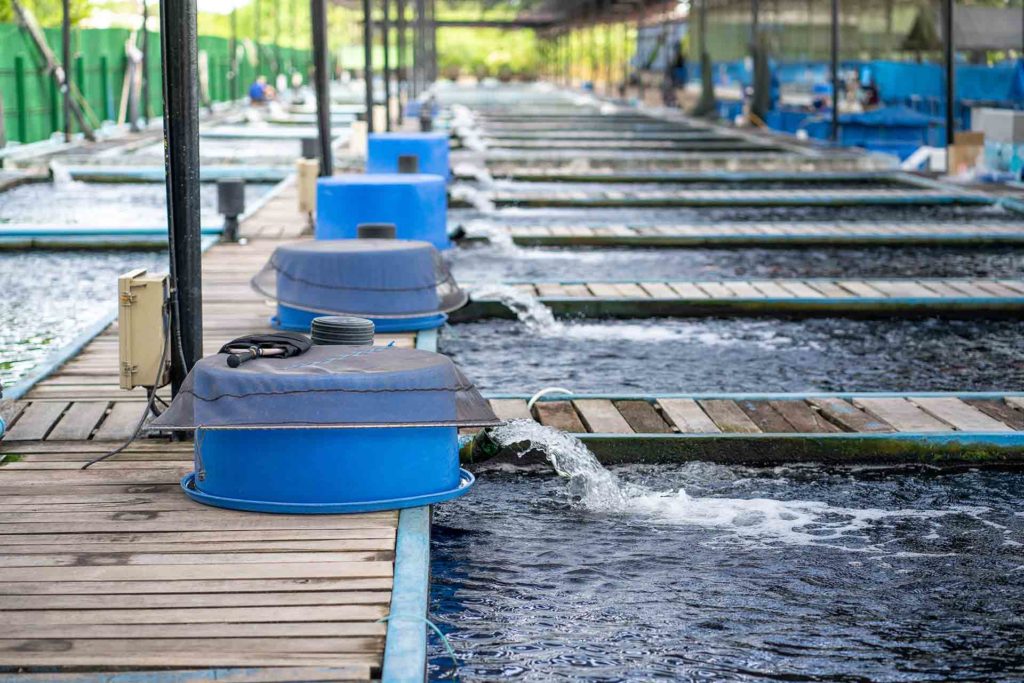
The costs vary depending on factors like the type of fish, rarity, and harvest method. Many people wonder about the prices per ounce a lot more than per pound since they understand that getting more than an ounce might cost them too much.
Still, let’s take a look at the five most common caviars and their prices per ounce and pound. Please note that all prices are approximate and vary depending on numerous factors, from import and export to authenticity.
The prices of numerous caviars differ yet remain in a similar range. Here are the average costs for an ounce of sturgeon roe:
If you find ounces insufficient for your needs, let’s see how much is 1 lb of caviar. However, expect these prices to jump up from the per-ounce section:
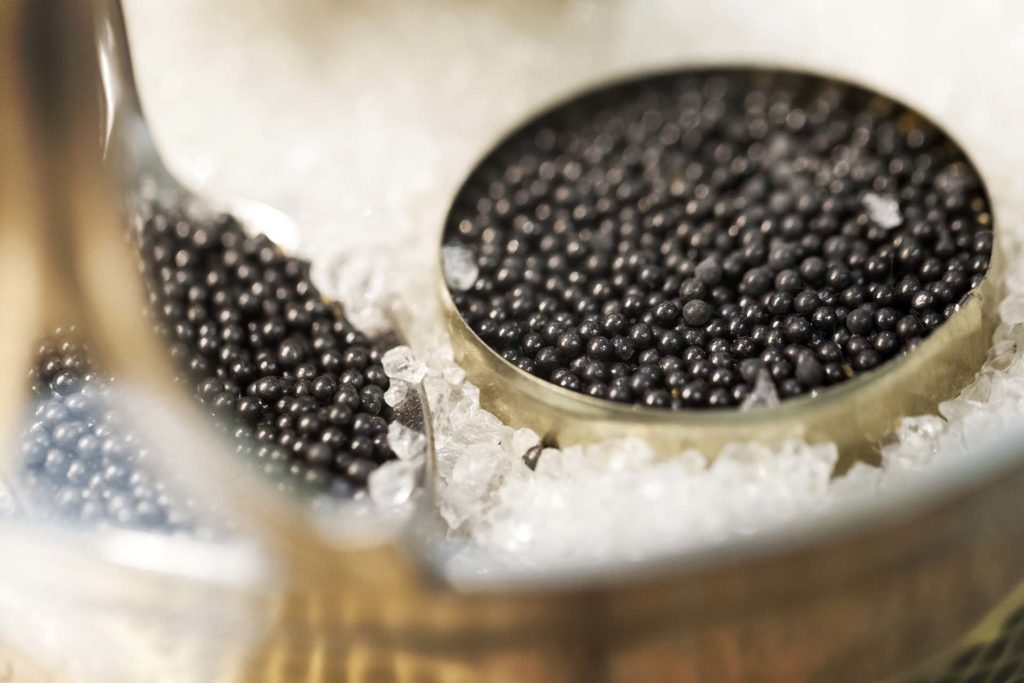
Let’s take a closer look at the caviars featured above. These are the five most popular and sought-after kinds, and it’s often possible to order caviar online and get one of these types by the ounce.
Siberian sturgeon is a popular and more affordable option compared to the rare and expensive Beluga and Osetra caviars. It offers a unique flavor profile and is widely appreciated by enthusiasts.
Siberian sturgeon (Acipenser baerii) is native to the rivers and lakes of Siberia and is now commonly farmed in various parts of the world, including Europe and North America. The increased availability and sustainable farming practices have made their roe a popular, budget-friendly option.
If you visit our caviar online store, you’ll see our traditional selection and deluxe caviars are all from Royal Siberian sturgeons. The Acipenser baerii species of sturgeons are often found in the Caspian Sea, but their roe is best known as classic Siberian caviar.
When you want to buy caviar online, especially the Siberian kind, visit our profile and get the best of this delicacy.
Siberian roe is known for its distinct flavor, often described as fresh, clean, and slightly nutty. The egg size is smaller compared to Beluga and Osetra, typically ranging from 2.5 to 3 millimeters in diameter. The color of the roe varies from dark gray to black, with a glossy and translucent appearance.
| Amount | Cost (approximate) |
| 100g (approx. 3 oz) | $260 |
| 250g (approx. 8 oz) | $650 |
| 500g (approx. 17 oz) | $1,300 |
Due to its rarity, exquisite taste, and the fact that the Beluga sturgeon is critically endangered, this delicacy is considered one of the most expensive and luxurious in the world. That’s why its cost often shocks potential buyers and narrows their numbers.
Beluga roe comes from the eggs of the Beluga sturgeon, one of the largest and oldest species of sturgeons. This fish is native to the Caspian and Black Sea regions, but it’s not a distant relative of any other fish, except for maybe Kaluga and Sevruga.
Many people will think of Beluga whales when hearing the name of this fish, but they’re not the same. Whales are aquatic mammals and therefore don’t produce eggs like regular fish types. For anyone thinking that eating this type of caviar is risky, don’t worry – the species has nothing to do with the same-named whale.
Its flavor is often described as delicate, smooth, and buttery, with a subtle hint of brininess. The taste is rich yet refined, offering a luxurious and unforgettable gastronomic experience.
The texture is equally notable, as the large, pearlescent eggs have a unique, creamy mouthfeel. When consumed, they deliver a satisfying « pop » sensation, releasing an exquisite flavor. The color of Beluga caviar can range from light gray to dark gray or even black, with a glossy and slightly translucent appearance.
This caviar’s taste and texture set it apart from other varieties and contribute to its esteemed reputation as one of the world’s most sought-after and exclusive delicacies.
| Amount | Cost (approximate) |
| 100g (approx. 3 oz) | $400 |
| 250g (approx. 8 oz) | $1,000 |
| 500g (approx. 17 oz) | $2,000 |
| 1 kg (approx. 35 oz) | $4,000 |
Osetra is derived from the Osetra sturgeon (Acipenser gueldenstaedtii) and is one of the most sought-after and luxurious caviars globally. It’s prominent due to its rich flavor, rarity, and unique farming requirements. Its reputation as « roe royalty » comes from the fact that it’s often labeled and sold as Royal Osetra.
Due to the decreasing wild population of Osetra sturgeon and strict regulations, farmers have turned to sustainable aquaculture practices to meet the growing demand for Osetra. This involves creative and innovative approaches to mimic the sturgeon’s natural habitat and diet.
Osetra has long been prized for its exquisite taste, firm texture, and diverse color palette. The egg sizes range from medium to large and vary in color from golden yellow to dark brown. The unique taste and color variations are attributed to the Osetra sturgeon’s diet and environment, giving it a more complex and nuanced flavor than other varieties.
| Amount | Cost (approximate) |
| 100g (approx. 3 oz) | $200 |
| 250g (approx. 8 oz) | $450 |
| 500g (approx. 17 oz) | $1,000 |
| 1 kg (approx. 35 oz) | $2,400 |
Sevruga is derived from the Sevruga sturgeon (Acipenser stellatus) and is a more accessible option among caviars. Known for its distinct flavor and smaller size, Sevruga has a rich history and is widely appreciated by enthusiasts. Its more abundant supply has made it a popular choice for indulging in this delicacy without breaking the bank.
Sevruga is native to the Caspian and Black Sea regions, and its caviar has been enjoyed for centuries. Historically, it was considered the most common of caviars in Russia and was often served to royalty and the upper class, cementing its reputation as a luxurious food item.
With the decline in their population and the implementation of strict fishing regulations, sustainable aquaculture practices are now the primary method of producing Sevruga. As a result, it has maintained its availability, allowing more people to enjoy this once-exclusive delicacy.
This delicacy is characterized by its distinct flavor profile, described as slightly briny, yet rich and buttery. The egg size is small, around 1 to 2 millimeters in diameter, with a firm texture. The color of the roe varies from light to dark gray, with a shiny and translucent appearance.
The taste is more intense than that of Beluga and Osetra, making it a preferred option for those who appreciate a stronger and more pronounced flavor. It can be more affordable overall, but a lot depends on the caviar shop you visit.
| Amount | Cost (approximate) |
| 100g (approx. 3 oz) | $400 |
| 250g (approx. 8 oz) | $800 |
| 500g (approx. 17 oz) | $1,600 |
| 1 kg (approx. 35 oz) | $3,200 |
Kaluga is derived from the Kaluga sturgeon (Huso dauricus) and is often referred to as the distant cousin of the highly coveted Beluga due to its similarities in taste and texture. This roe has gained recognition for its unique characteristics and appealing flavor profile.
Kaluga sturgeons are native to the Amur River basin, which stretches across Russia and China. Though not the same species as the Beluga sturgeon (Huso huso), Kaluga shares certain characteristics with its more famous cousin.
The Kaluga is known for resilience and adaptability. It is capable of surviving in various water conditions, making it suitable for aquaculture. Kaluga sturgeon farming has increased in recent years due to the decline in wild sturgeon populations and the growing demand for caviar.
Sustainable farming practices, like recirculating aquaculture systems and providing high-quality, balanced diets, have allowed farmers to cultivate this fish in controlled environments, ensuring a steady supply of valuable roe.
This roe is known for its rich, buttery, and smooth flavor profile, similar to that of Beluga roe. The egg size is large, typically 2.8 to 3.5 millimeters in diameter, with a firm texture. The color varies from light to dark brown or even golden shades, with a glossy and translucent appearance.
The taste of Kaluga is less intense than that of Sevruga but more pronounced than Osetra, offering a well-balanced and delightful gastronomic experience. It is considered a more affordable alternative to Beluga without compromising on taste and quality.
| Amount | Cost (approximate) |
| 100g (approx. 3 oz) | $240 |
| 250g (approx. 8 oz) | $600 |
| 500g (approx. 17 oz) | $1,200 |
| 1 kg (approx. 35 oz) | $2,400 |
The more you learn about caviars from different sturgeons, the more you’ll learn about what it takes to become a connoisseur. If you plan to learn more about exquisite caviars, why not start at the K&Cie Caviars shop?
We offer a great selection of traditional, select, and premium Siberian sturgeon caviars. They’re the best thing on this side of the world and a fantastic addition to your next house party. Elevate the atmosphere and find our caviar for sale on our website.
Blogues connexes

What does caviar taste like? Read more about the flavor profiles, types, and nutritional value of this luxury food item and where you can buy it.
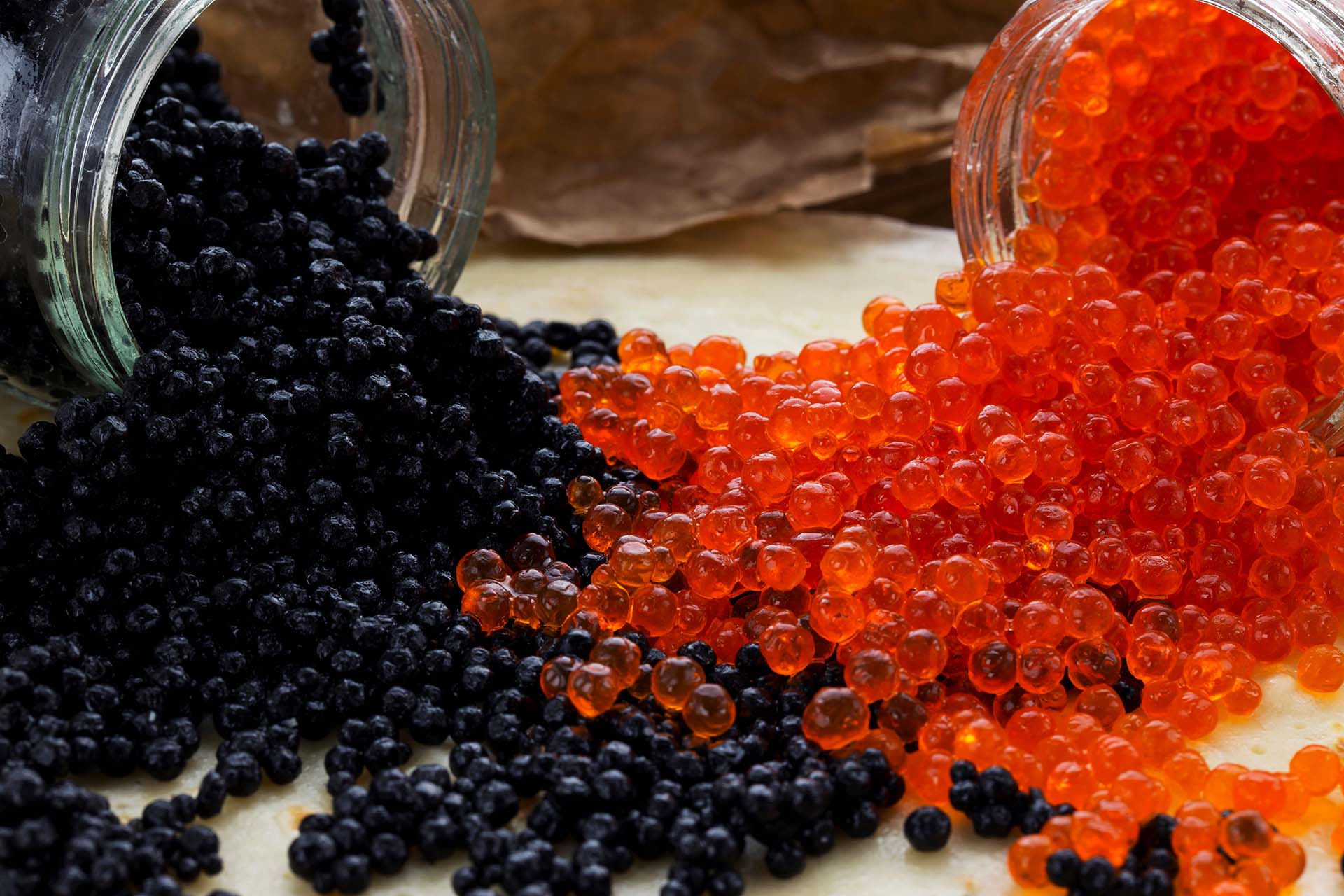
Red caviar vs. black caviar – what is the difference? If you’re not sure about the answer and want to learn more about both of them, we are here to help.
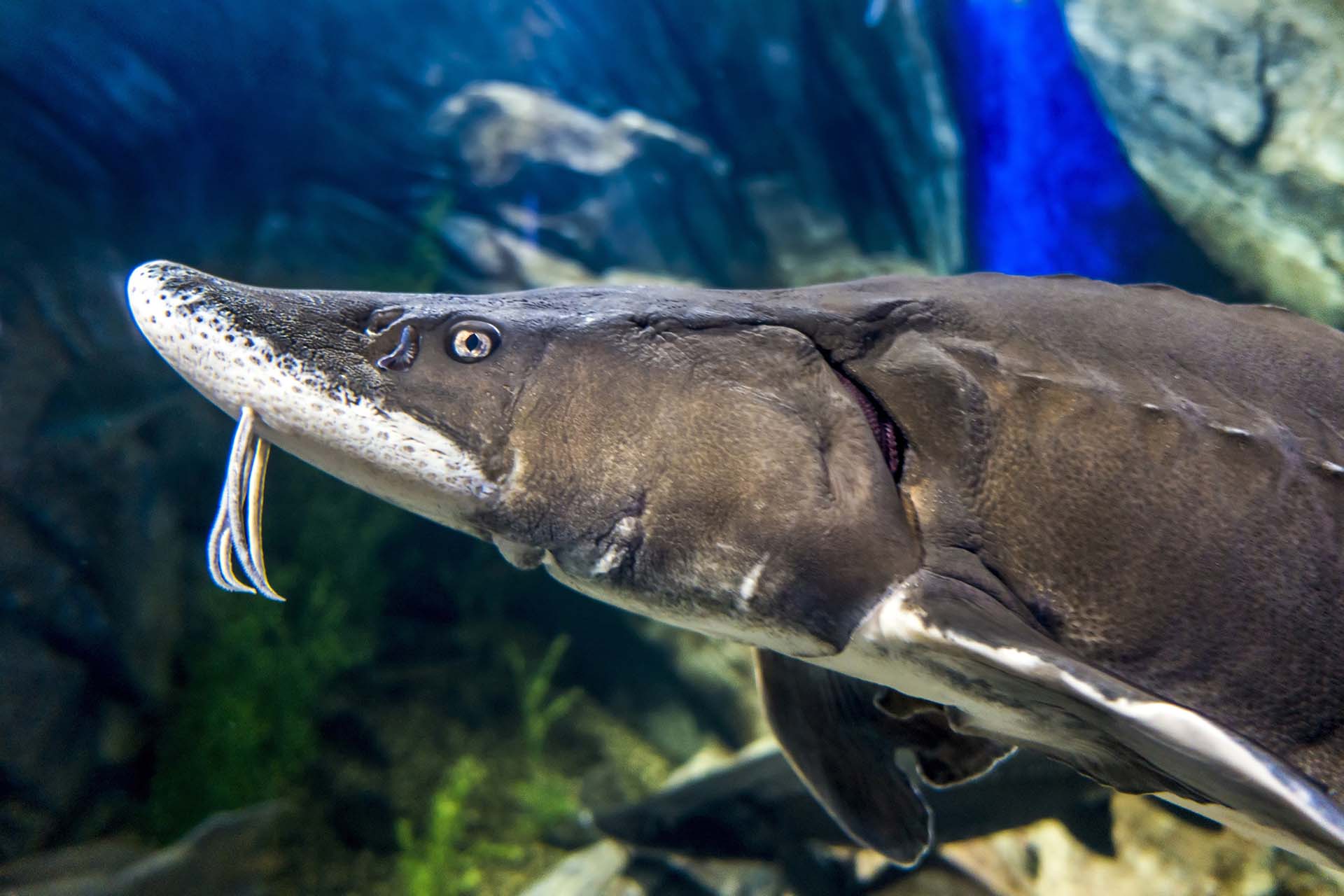
Find out what fish is black caviar from and indulge in the luxury of this culinary treasure. Knowing the difference in varieties can help you choose better.
Plan du site
Société
K&cie Sàrl
Route de Crassier 61
1299 Crans-près-Céligny
TVA CHE-383.472.711
Contatez nous
Droits d'auteur 2023, K&cie Sàrl, Tous droits réservés.
Développé par Made Online